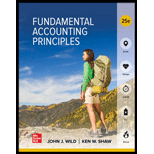
1.
A cost-of-quality (COQ) depicts quality-related costs that a firm incurs during a reporting period. These costs are bifurcated into four categories including prevention costs, appraisal costs, internal failure costs, and external failure costs.
:
The total cost of quality for last year and this year.
2.
A cost-of-quality (COQ) report depicts quality-related costs that a firm incurs during a reporting period, that can help management as well as users to determine total spending on quality, identify the areas that need attention, and improvement, and overtime recognizes the effects of their actions on both total quality costs and the components of overall quality costs.
:
Cost of each category as a percent of the total cost of quality of last year.
3.
A cost-of-quality (COQ) report depicts quality-related costs that a firm incurs during a reporting period, that can help management as well as users to determine total spending on quality, identify the areas that need attention, and improvement, and overtime recognizes the effects of their actions on both total quality costs and the components of overall quality costs.
:
Cost of each category as a percent of the total cost of quality of last year.
4.
A COQ report can help management as well as users to determine total spending on quality, identify the areas that need attention, and improvement, and over time recognizes the effects of their actions on both total quality costs and the components of overall quality costs.
:
Want to see the full answer?
Check out a sample textbook solution
Chapter 5 Solutions
Fundamental Accounting Principles
- Given the solution and accounting questionarrow_forwardI want to correct answer general accounting questionarrow_forwardElectronica Ltd. sells home appliances online. The budgeted cost of the sales order processing activity for the next period is $720,000, and the company estimates 80,000 sales orders will be processed. a) Determine the activity rate of the sales order processing activity. b) If Electronica Ltd. processes 55,000 sales orders, what is the total sales order processing cost?arrow_forward
- Calculate the bond discount amortization for the six months ended June 30, 2025 ?? Accountingarrow_forwardPlease need answer the general accounting question not use aiarrow_forwardHorngren's Financial & Managerial Accounting: The Managerial Chapters, 8th Edition E-M:3-19 Tracking the flow of costs Complete the missing amounts and labels in the T-accounts. Work-in-Process Inventory-Cutting Balance, May 1 0 (a) Transfer out to ___________ Direct Materials 52,000 Direct Labor 10,000 Manufacturing Overhead 36,000 Balance, May 31 11,000 Work-in-Process Inventory-Finishing Balance, May 1 12,000 130,000 Transfer out to ___________ Transfer in from ________ (b) Direct Materials 23,000 Direct Labor ( c) Manufacturing Overhead 18,000 Balance, May 31 17,000 Work-in-Process Inventory-Packaging Balance, May 1 5,000 (d) Transfer out to __________ Transer in from _________ ( e) Direct Materials 5,000 Direct Labor 6,000 Manufacturing Overhead 12,000 Balance, May 31 8,000…arrow_forward
- Principles of Accounting Volume 1AccountingISBN:9781947172685Author:OpenStaxPublisher:OpenStax College
 College Accounting (Book Only): A Career ApproachAccountingISBN:9781337280570Author:Scott, Cathy J.Publisher:South-Western College Pub
College Accounting (Book Only): A Career ApproachAccountingISBN:9781337280570Author:Scott, Cathy J.Publisher:South-Western College Pub College Accounting, Chapters 1-27AccountingISBN:9781337794756Author:HEINTZ, James A.Publisher:Cengage Learning,
College Accounting, Chapters 1-27AccountingISBN:9781337794756Author:HEINTZ, James A.Publisher:Cengage Learning,  Cornerstones of Financial AccountingAccountingISBN:9781337690881Author:Jay Rich, Jeff JonesPublisher:Cengage Learning
Cornerstones of Financial AccountingAccountingISBN:9781337690881Author:Jay Rich, Jeff JonesPublisher:Cengage Learning College Accounting (Book Only): A Career ApproachAccountingISBN:9781305084087Author:Cathy J. ScottPublisher:Cengage Learning
College Accounting (Book Only): A Career ApproachAccountingISBN:9781305084087Author:Cathy J. ScottPublisher:Cengage Learning Intermediate Accounting: Reporting And AnalysisAccountingISBN:9781337788281Author:James M. Wahlen, Jefferson P. Jones, Donald PagachPublisher:Cengage Learning
Intermediate Accounting: Reporting And AnalysisAccountingISBN:9781337788281Author:James M. Wahlen, Jefferson P. Jones, Donald PagachPublisher:Cengage Learning





